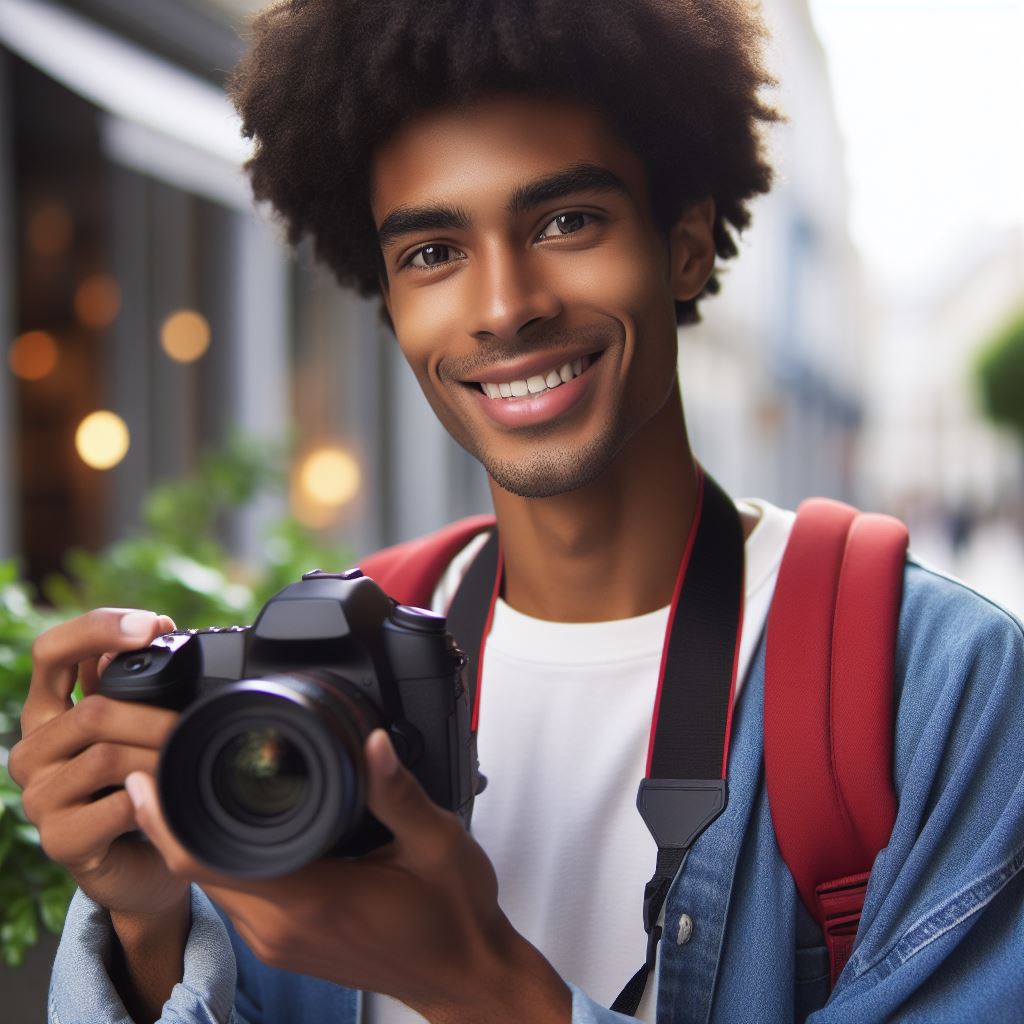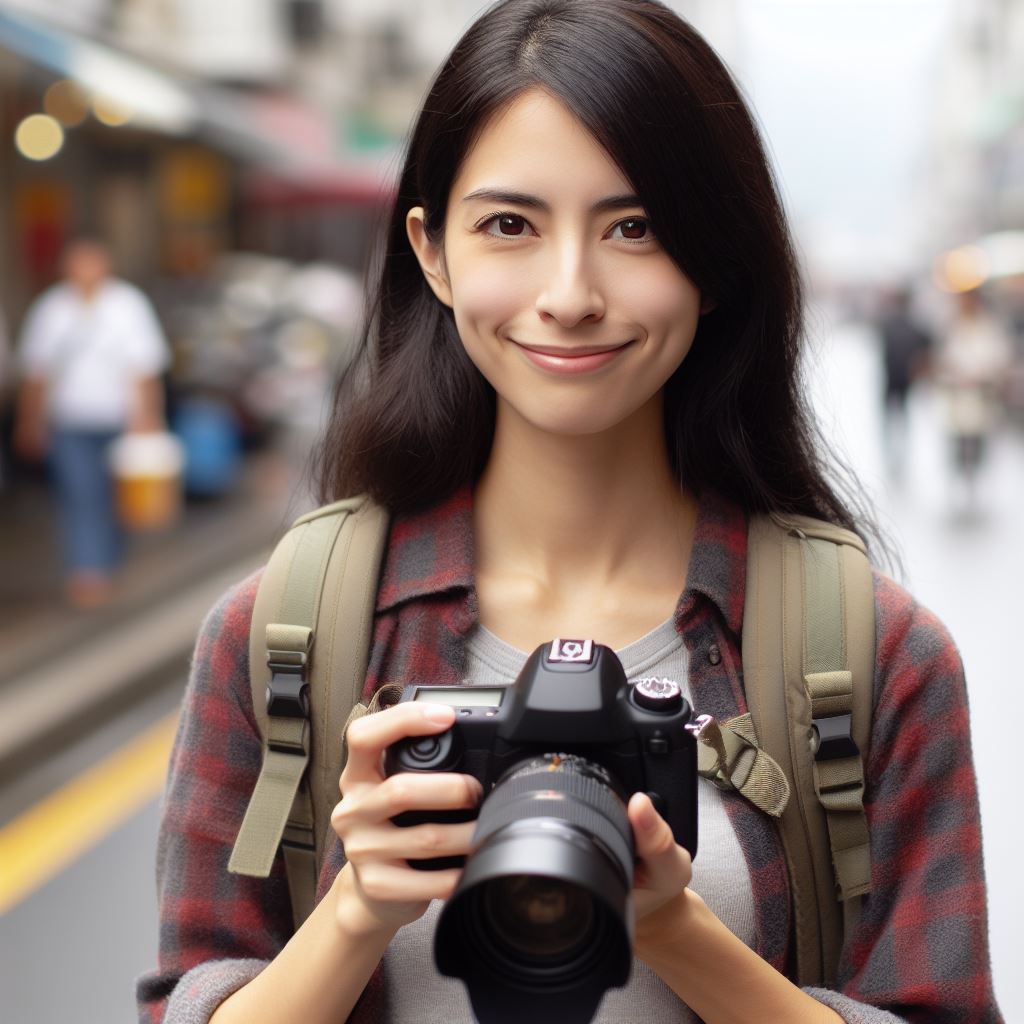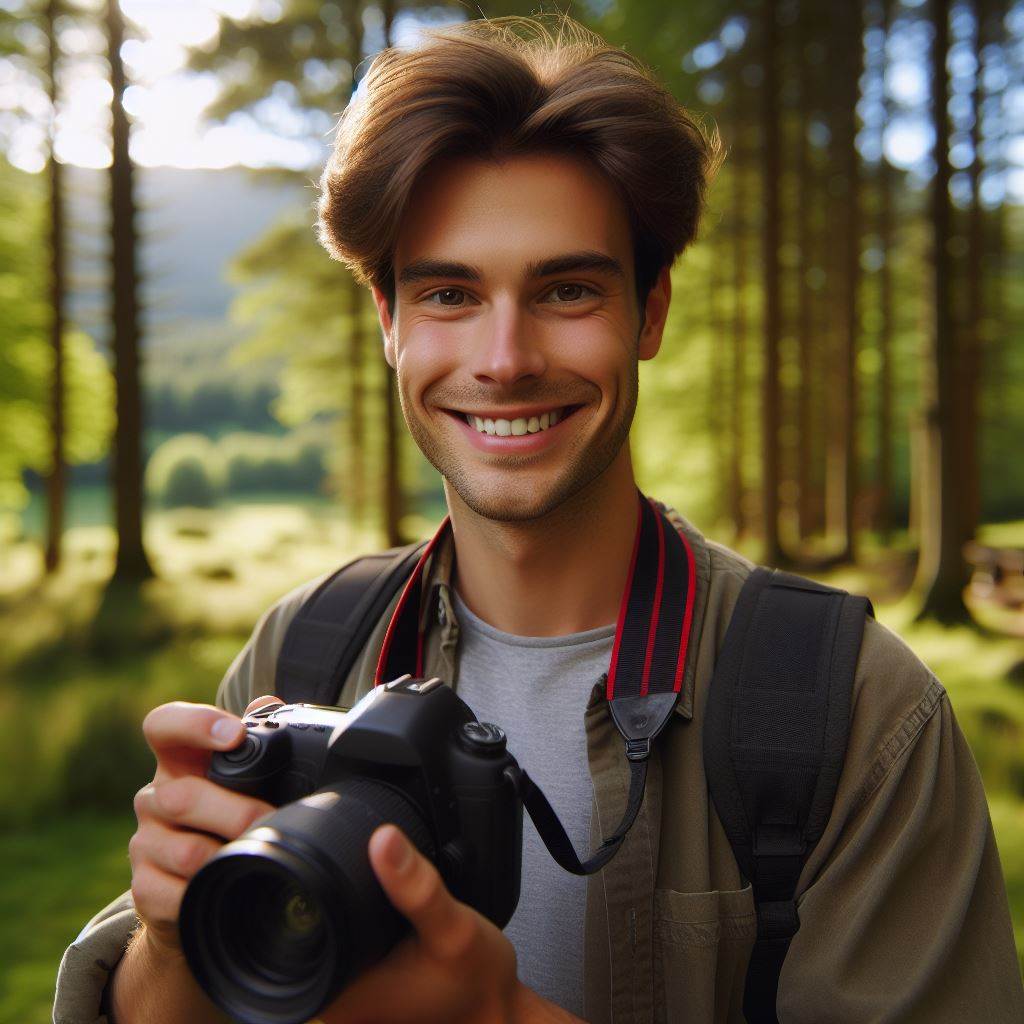Introduction
Understanding the perspectives of New Zealand photographers on film vs. digital photography is crucial.
It sheds light on their artistic choices, influenced by unique cultural and environmental factors.
In New Zealand, where landscapes vary from rugged coastlines to lush forests, photographers often consider the medium’s ability to capture these diverse scenes accurately.
Film photography, with its chemical processes and light-sensitive film, offers a nostalgic and organic feel, favored by photographers seeking a more tactile approach.
On the other hand, digital photography’s convenience and immediate results attract those who prioritize efficiency and flexibility.
By exploring the viewpoints of New Zealand photographers, we gain a deeper appreciation for the artistry and technical aspects of both mediums.
This understanding not only enriches our own photographic endeavors but also contributes to the broader dialogue on the evolution of photography in a digital age.
Historical Context
A. Popularity of film photography in the past
Film photography was the dominant medium for capturing images for several decades.
Photographers relied on film cameras and darkrooms to develop their photographs.
Film cameras provided a unique aesthetic and a tangible feel to the images.
Many photographers cherished the process of shooting film and the anticipation of seeing the results.
B. Shift to digital photography and its impact
The advent of digital cameras brought a significant shift in the photography industry.
Digital technology allowed instant review of images, eliminating the need for film development.
The convenience of digital photography attracted many photographers, especially professionals.
The ability to manipulate and edit images digitally opened up new creative possibilities.
Personalized Career Consulting
Unlock your potential with expert career advice tailored to your goals. Get personalized guidance and actionable steps toward your dream career in New Zealand.
Get StartedDigital cameras also introduced features like high-speed shooting and automatic settings, making photography more accessible to beginners.
C. Film photography’s resurgence in recent years
Despite the rise of digital photography, film has experienced a revival in recent years.
Many photographers have rediscovered the unique qualities of film.
Film photography offers a nostalgic and vintage appeal that digital cannot replicate.
Some photographers appreciate the slower, more deliberate process of shooting film.
The limited number of exposures on a roll of film forces photographers to be more intentional with each shot.
Film also provides a distinctive grain and color palette that digital filters try to emulate.
Film photography has gained a cult following among young photographers looking for an alternative to digital.
In essence, film photography had its heyday in the past but faced a decline with the advent of digital technology.
Digital cameras revolutionized the industry, offering convenience and instant results.
However, in recent years, film has experienced a resurgence, attracting photographers who appreciate its unique aesthetic and slower process.
Film photography offers a distinct look and feel that digital cannot replicate.
Whether shooting film or digital, photographers now have the freedom to choose the medium that best suits their artistic vision.
Read: Wedding Photography Trends in New Zealand
Transform Your Career with a Professional CV and Cover Letter
Stand out to employers with an ATS-optimized resume and tailored cover letter designed to match your dream role. Let us craft your job application materials for success!
Get StartedAdvantages of Film Photography for NZ Photographers
Film photography continues to hold a special place in the hearts of many NZ photographers, despite the rise of digital technology.
While digital photography offers its own advantages, film photography offers unique qualities that cannot be replicated.
A. Unmatched aesthetic appeal
Film photography is renowned for its unparalleled aesthetic appeal, which sets it apart from digital counterparts.
With film, photographers can achieve a warmth and texture that adds depth and character to their images.
The dynamic range of film also allows for a greater ability to capture details in both highlights and shadows.
B. Slower, more deliberate process
One of the advantages of film photography is the slower and more deliberate process it involves.
As photographers shoot with film, they must carefully consider their composition and pay attention to even the smallest of details.
This deliberate approach often leads to enhanced composition and an increased appreciation for each shot.
C. Nostalgic and authentic feel
Film photography has a nostalgic and authentic feel that appeals to both clients and photographers alike.
Certain clients seek the unique qualities that film photography offers, as it evokes a sense of nostalgia and authenticity.
Additionally, many photographers feel a strong connection to traditional photography methods and find joy in using film as a medium.
In fact, NZ photographers can benefit from embracing film photography alongside digital technology.
The unmatched aesthetic appeal, slower and more deliberate process, and nostalgic feel of film photography all contribute to its enduring popularity.
While digital photography may offer convenience and immediate gratification, film photography provides a unique and irreplaceable experience for photographers and clients alike.
Boost Your Career with a Standout LinkedIn Profile
Attract recruiters and expand your network with a fully optimized LinkedIn profile tailored to highlight your strengths and professional goals. Let your profile open doors to new opportunities!
Get OptimizedRead: Maori Culture Through the Lens of NZ Photography

Advantages of Digital Photography for NZ Photographers
A. Instant results and increased efficiency
1. Immediate feedback for adjustments
Digital photography enables photographers to instantly review their shots, allowing for quick adjustments to composition, exposure, and other settings.
This instant feedback loop enhances the efficiency of the shooting process, as photographers can make necessary changes on the spot to ensure optimal results.
Gone are the days of waiting for film to be developed to see if a shot turned out as intended; with digital, photographers can assess their work immediately and make corrections as needed.
2. Less need for costly film and development
One of the most significant advantages of digital photography is the elimination of film and development costs.
In traditional film photography, photographers had to purchase rolls of film and pay for their development, which could quickly add up, especially for professionals who frequently shoot in large volumes.
With digital cameras, photographers can capture an unlimited number of images without worrying about the expense of film or the time-consuming process of development.
This cost-saving benefit not only makes digital photography more economical but also encourages experimentation and creativity, as photographers can shoot more freely without the fear of wasting film.
B. Vast editing capabilities
1. Post-production flexibility and control
Digital photography provides photographers with unparalleled flexibility and control during the post-production process.
With advanced editing software such as Adobe Photoshop and Lightroom, photographers can manipulate every aspect of their images, from adjusting exposure and color balance to removing unwanted elements and enhancing details.
This level of control allows photographers to fine-tune their images to perfection, ensuring that they meet their artistic vision and professional standards.
2. Easier retouching and experimentation
Retouching and experimentation are made significantly easier with digital photography.
Photographers can quickly and seamlessly make changes to their images, whether it’s removing blemishes from a portrait, compositing multiple images together, or trying out different editing techniques to achieve a desired effect.
Digital tools offer endless possibilities for creative expression, allowing photographers to push the boundaries of their craft and explore new artistic avenues with ease.
C. Ideal for fast-paced environments and commercial work
1. Ability to shoot rapidly and in burst mode
Digital cameras are perfectly suited for fast-paced environments and commercial work, thanks to their ability to shoot rapidly and in burst mode.
Whether capturing action shots at a sporting event, documenting a live performance, or shooting a fast-moving subject in a commercial setting, digital cameras excel at capturing fleeting moments with precision and speed.
Photographers can take advantage of burst mode to capture a series of rapid-fire shots, ensuring that they don’t miss a single moment of the action.
2. Seamless integration with digital workflows
Digital photography seamlessly integrates into modern digital workflows, making it the preferred choice for professional photographers working in commercial settings.
From tethered shooting to real-time image transfer, digital cameras offer a host of features that streamline the photography process and enhance efficiency.
Photographers can quickly transfer images from camera to computer for editing and distribution, allowing for smooth collaboration with clients and colleagues.
Additionally, digital files are easy to store, organize, and archive, ensuring that valuable images are always accessible when needed.
Read: Landscape Photography: Capturing NZ’s Beauty
Case Studies: Perspectives from NZ Photographers
A. Interview with a renowned film photographer
1. Tangible Process and Deliberate Shots
The renowned film photographer, let’s call her Sarah, explained her deep affinity for the tangible process of shooting with film.
She described how each shot feels more deliberate and intentional compared to digital photography.
With film, there’s a certain level of commitment to each frame, as there are limited shots per roll.
This limitation forces Sarah to slow down and carefully compose her shots, resulting in a more thoughtful approach to photography.
2. Unique Challenges and Timeless Aesthetics
Sarah elaborated on the unique challenges she faces when working with film, such as the limited number of shots per roll and the need to manually adjust settings for each shot.
However, she emphasized that these challenges also serve as opportunities for creativity and experimentation.
Sarah finds immense satisfaction in overcoming these challenges and capturing images with a timeless aesthetic that digital photography often struggles to replicate.
She values the grain, texture, and character that film adds to her photographs, believing that it adds depth and authenticity to her work.
B. Interview with a successful digital photographer
1. Immediacy and Editing Flexibility
In contrast to Sarah’s approach, the successful digital photographer, James, highlighted the immediacy and editing flexibility afforded by digital photography.
James explained how digital technology allows him to capture, review, and edit images in real-time, enabling him to work quickly and efficiently, which is essential for his fast-paced style of photography.
He emphasized the convenience of being able to adjust settings on the fly and instantly review his shots to ensure he captures the perfect moment.
2. Digital Integration and Widened Audience Reach
James discussed how digital technology has revolutionized his career and transformed the way he engages with his audience.
He emphasized the importance of digital platforms for showcasing his work, reaching a wider audience, and building his brand as a photographer.
James explained how digital tools such as social media, websites, and online galleries have allowed him to connect with clients and collaborators worldwide, expanding his opportunities and visibility within the photography industry.
Overall, James views digital technology as an indispensable tool that has propelled his career to new heights.
Read: Breaking into NZ Photography: A Starter Guide
Conclusion
The debate between film and digital photography is a topic that continues to spark discussion among photographers.
While both mediums have their own merits and drawbacks, it is crucial for photographers to recognize the importance of personal preference and individual needs when selecting a medium.
Some photographers may prefer the tactile experience and timeless aesthetics of film, while others might value the convenience and versatility of digital.
Ultimately, the choice between film and digital should be based on what works best for each photographer and their specific goals and needs.
Rather than getting caught up in the film vs digital argument, it is advisable for photographers to embrace both mediums.
By experimenting with both film and digital, photographers can expand their creative horizons and unlock new possibilities.
Film photography allows for a slower and more deliberate approach, offering a nostalgic and artistic feel.
On the other hand, digital photography enables instant feedback, post-processing flexibility, and the ability to shoot in a wide range of conditions.
By embracing both film and digital, photographers can enjoy the best of both worlds.
They can savor the tangible and artistic qualities of film, while also harnessing the convenience and technological advancements of digital.
In closing, the choice between film and digital is a personal one, and it is up to each photographer to explore both mediums and determine what works best for them.
Whether it’s capturing stunning landscapes on film or shooting fast-paced events with a digital camera, the key is to find the medium that allows photographers to express their unique vision and create captivating images.




